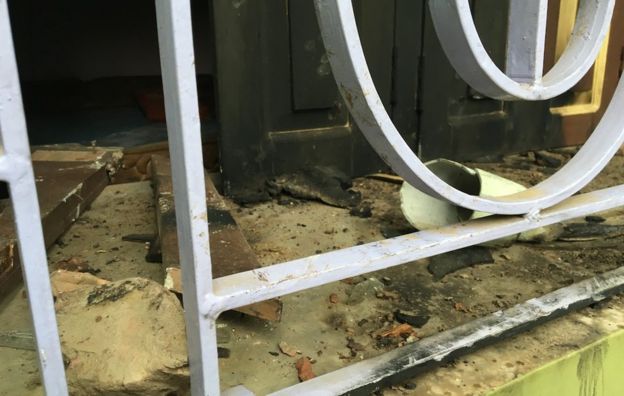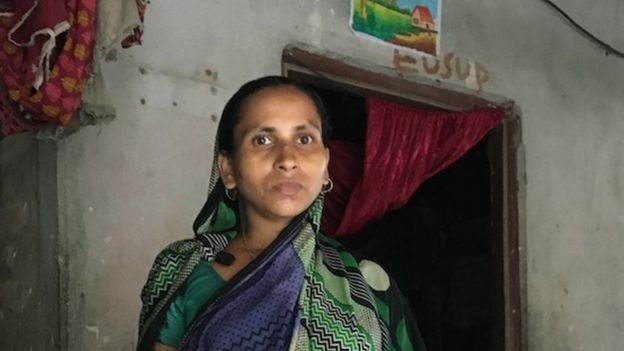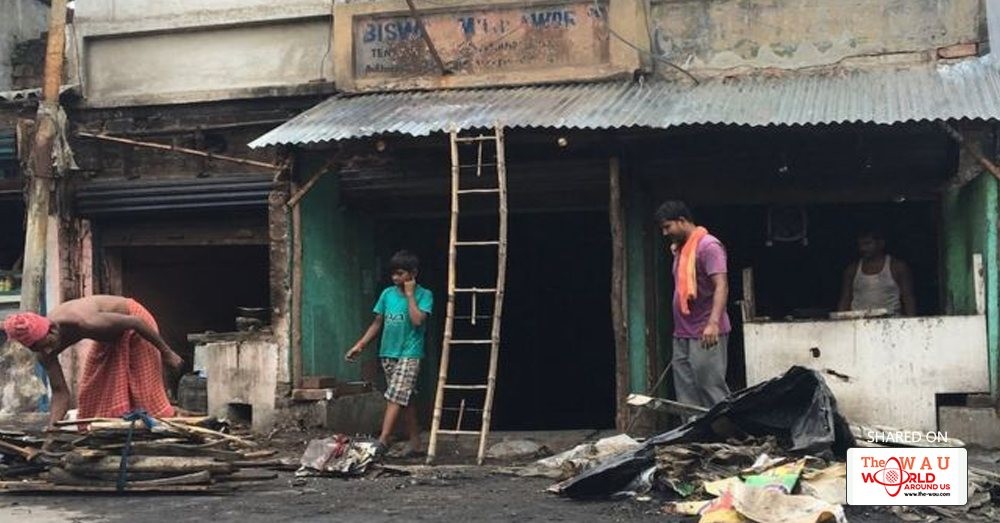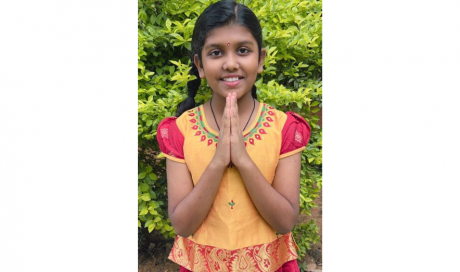Clashes between Hindus and Muslims in the Indian state of West Bengal, which began last week after a 17-year-old student posted an offensive cartoon of the Prophet Muhammad on Facebook, have left one man dead and dozens others injured. BBC Hindi's Nitin Srivastava has sent this report after travelling around the riot-torn area.
It has been raining heavily in Magurkhali, a remote village in Baduria town in 24 Parganas district, and Rina Mandal says she wishes it had rained as much the night her Hindu neighbours' home was burnt by an angry mob.
This Muslim family of five had just finished their dinner when hundreds of armed Muslim men came looking for the teenager who had posted the cartoon.
"We had never seen those people in our area before, they were surely outsiders," Mrs Mandal said.
"I have lived here all my life but never seen such communal frenzy. We hid our children in the kitchen and wanted to flee.
"I still can't believe they came to kill my neighbour who used to visit us during Eid and we dined at his home during the Durga Puja festival."
Many other local people said the attackers were not from their village and that after they had left, both Hindu and Muslim residents of the village had come together to douse the fire.
The teenager or his family were not at home so the mob left after setting fire to the house.
Burnt home of teenager in Baduria

Although police arrested the 17-year-old later on, the outrage over the cartoon resulted in violence spreading to the neighbouring towns of Basirhat and Tentuliya.
Angry mobs went on the rampage for the next few days, torching police stations, government buildings and offices of political parties, and damaging vehicles.
Even on Monday, roads in the region continue to be deserted, schools and internet services are shut and patients are struggling to get to the hospital.
Locals get upset at the sight of cameras and there have been reports of attacks on journalists.
"What's happened is sad but what's more worrying is the fact that such incidents leave a deep scar on the common man's approach towards the other community," laments Anindya Acharya, a lawyer who has not been able to visit the court for a week now.
West Bengal, currently ruled by the Trinamool Congress Party, led by the firebrand Chief Minister Mamata Banerjee, has witnessed at least seven incidents involving religious clashes in the past 18 months.

Malda, Dhulagarh, West Midnapore, Burdwan and Jalangi have been some of the areas where Hindus and Muslims have clashed on the streets.
Social media are believed to be a reason behind many of these flare-ups in which public property has been destroyed and families have been uprooted.
A friend of the teenager who posted the cartoon told me that they had "recently got active on social media since internet is cheap now".
"We were together that afternoon, we had no clue what could happen by just one post," he said.
"Concerned over my safety, my family sent me away for four days. I swear I will never go on social media again."
Most people I met in the area have dozens of pictures of burnt shops and vehicles. No-one, however, seems to know the source of these pictures or how authentic they are.
After much criticism in the national media and protests by rival political parties, the state government has ordered a judicial inquiry into the incident and promised to act tough with the rioters.
The clashes have also acquired a political hue - state governor Kesari Nath Tripathi, who is a former leader from India's governing Bharatiya Janata Party, has been involved in a verbal spat with Ms Banerjee.
Several MPs from the BJP and other opposition parties were not allowed to visit the riot-affected areas by the state government, prompting angry responses.

The governor has expressed concerns over growing incidents of communal violence in the state and many BJP leaders have accused the state government of "excessive Muslim appeasement" to retain power. At 27%, West Bengal has the second highest percentage, after Assam, of the minority Muslim population in India.
Ms Banerjee has rubbished accusations of appeasement, saying, "West Bengal will never get influenced by communal forces."
In some places, however, the recent violence has seen a coming together of communities to "protect each other".
Deganga town, which borders Basirhat and Baduria, had witnessed clashes between Hindus and Muslims in 2010 but now it appears to have moved on.
"My temple is just 100 metres from the mosque," said Amar Banerjee, head priest of the Goddess Kali temple.
"We both do our prayers peacefully but some people only try to gain political mileage out of religion and that's worrying."
The few devotees coming for the morning prayers, however, are keen to know what actually happened in Magurkhali that evening.
The mosque nearby has put up a big banner, highlighting Hindu-Muslim friendship in the region.
Imam Muhammad Azmat Ali, the priest of the mosque, has just finished the afternoon prayers as we meet him.
"Go anywhere here, you will find Hindus and Muslims living in close co-operation, not only as neighbours but also doing business together," he says. "Who says we are getting polarised?"
Share This Post















